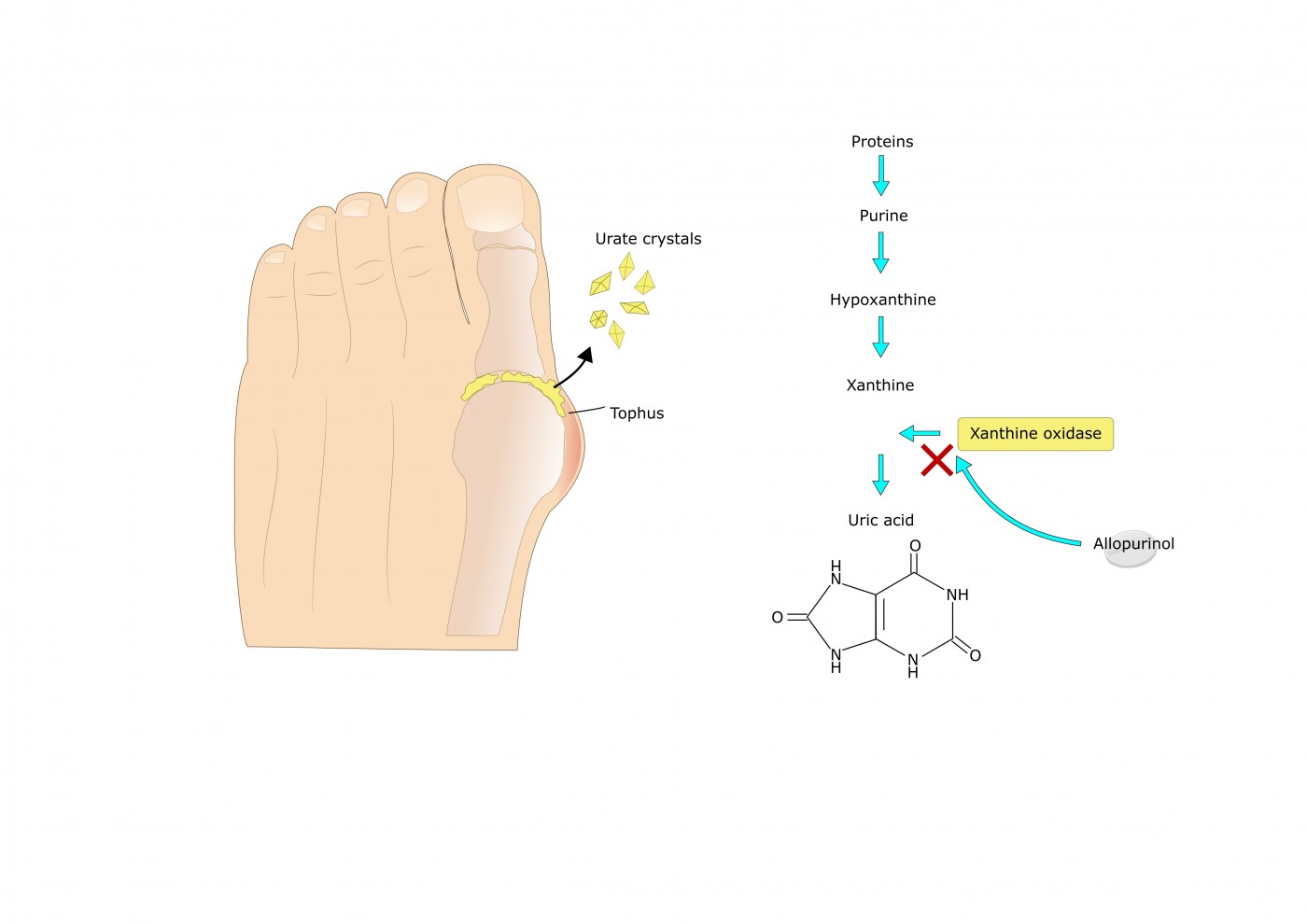Multiple Sclerosis Patients Less Susceptible to Gout in Study

 What do multiple sclerosis and gout have in common? Uric acid. Uric acid, a byproduct of purine metabolism, causes crystal accumulation in joints (usually in the foot) and subsequent pain. Uric acid has also been shown to protect neurons via antioxidant activity. Since high levels of uric acid that may have protective effects on neurons are present in gout patients, a group of researchers wanted to test the hypothesis that gout may result in a reduced risk of developing neurological disease.
What do multiple sclerosis and gout have in common? Uric acid. Uric acid, a byproduct of purine metabolism, causes crystal accumulation in joints (usually in the foot) and subsequent pain. Uric acid has also been shown to protect neurons via antioxidant activity. Since high levels of uric acid that may have protective effects on neurons are present in gout patients, a group of researchers wanted to test the hypothesis that gout may result in a reduced risk of developing neurological disease.
“This study investigated the epidemiological evidence for a protective role of high serum concentration of uric acid, for which we used gout as a proxy, in the aetiology of multiple sclerosis, Parkinson’s disease, or motor neuron disease,” wrote Dr. Julia Pakpoor, who works alongside Dr. Michael J. Goldacre at the Unit of Health-Care Epidemiology in the University of Oxford. The article, “Clinical Associations between Gout and Multiple Sclerosis, Parkinson’s Disease and Motor Neuron Disease: Record-linkage Studies,” was published in the journal BMC Neurology.
Dr. Pakpoor’s study analyzed patient records for hospital admissions and deaths in England for the time period between 1999 and 2012. Of approximately 9 million hospital admissions, exactly 214,653 were related to gout, 82,220 related to multiple sclerosis, 217,179 related to Parkinson’s disease, and 25,185 related to motor neuron disease.
[adrotate group=”4″]
When researchers analyzed the long-term data from the study, patients with gout were not found to be less likely to develop multiple sclerosis. Although the odds ratios revealed a modest correlation between gout and subsequent multiple sclerosis, that observation was negated when the researchers only analyzed neurological disease diagnosed within five years of a gout diagnosis.
On the other hand, patients with multiple sclerosis were less likely to experience a bout of gout. “Notably, a reduced risk of multiple sclerosis and Parkinson’s disease following gout was significant after the first year following admission for gout, and was then sustained long-term,” wrote Dr. Pakpoor. “For example, after five years following hospitalization for multiple sclerosis the rate ratio for gout was 0.70 and after hospitalization for Parkinson’s disease 0.52.”
Strengths of the study included a large sample size and a national representation of the population. However, since the study was not conducted in a cohort of patients, the researchers are limited in knowing if hospitalizations were “first ever” diagnoses. Additionally, gout is only a representation of increased serum uric acid, meaning that the association between uric acid and neurological disease may be underestimated.
To remediate this limitation, the authors suggest the possibility of conducting a follow-up study of multiple sclerosis patients to identify the presence of gout or serum levels of uric acid over time.






